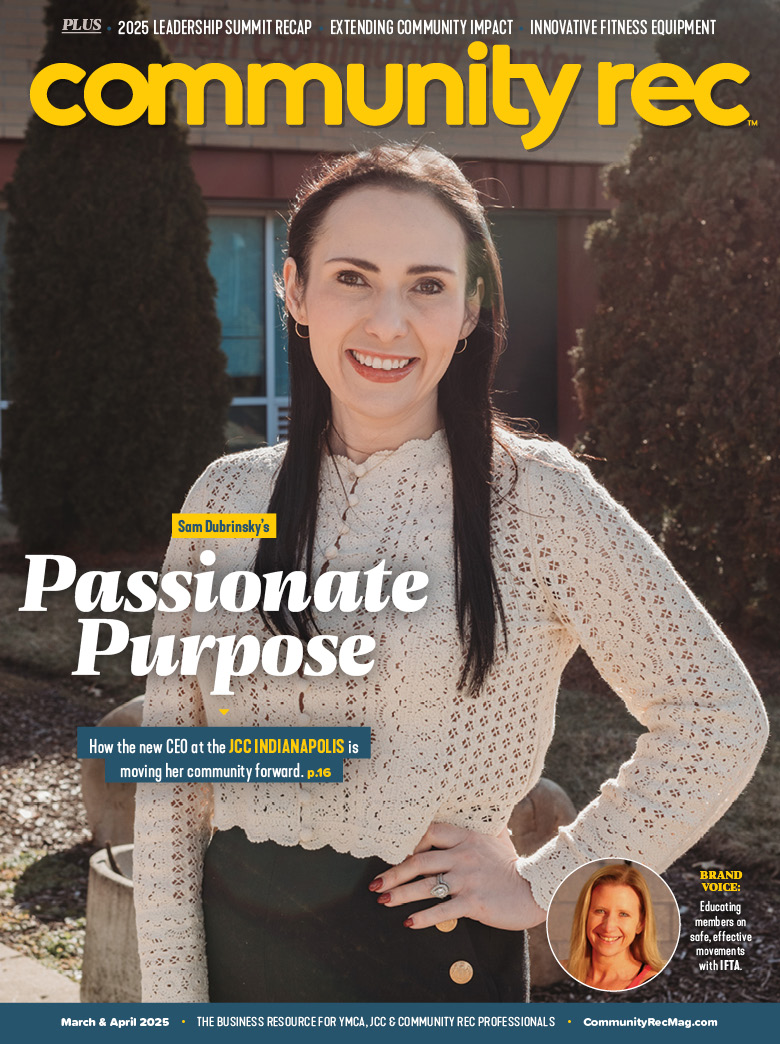All the best practices and strategies for ensuring your facilities achieve top-tier quality.
Hall of Fame basketball coach John Wooden once said, “I believe in the basics: attention to, and perfection of, tiny details that might be commonly overlooked. They may seem trivial, perhaps even laughable to those who don’t understand, but they aren’t.”
While community rec centers aren’t competing for national basketball championships, leaders are demonstrating a similar passion for mastering all the small aspects of their facilities.
For example, Tom LaCasse, the general manager of fitness and aquatics at the Staenberg-Loup Jewish Community Center in Denver, Colorado, conducts a morning walkthrough of the JCC as his first task upon his arrival to work.
“This is before checking emails as it will assist with identifying issues and ensure everything is in order,” said LaCasse. “During the walkthrough, connect with staff with a simple, ‘Good morning. Do you have everything you need for the day?’ It’s an easy way to facilitate relationship-building and informal coaching. It’s great to show you care about employees and the facility. Since everyone sees things differently, encourage your team to be involved in walkthroughs, which will help catch items from a different perspective.”
For LaCasse, his main goal is to always have the JCC in photo-ready condition, meaning if someone took a photo of any part of the facility, it could be used for a marketing brochure. Besides a morning walkthrough, he advised to keep a checklist to guarantee nothing is overlooked.
Just as important to walkthroughs and team feedback is communicating with members and visitors. Kyle Taylor, the maintenance manager of the Pleasant Prairie RecPlex in Pleasant Prairie, Wisconsin, said it’s imperative to understand what needs improvement in a rec center, and often users are the best source.
“Everyone wants to imagine their facility growing and offering everything possible to their users,” said Taylor. “But without understanding how your facility works, you’ll end up overlooking things or putting resources into something that isn’t needed. In my experience, you achieve more by focusing on improving deficiencies than by building up what already works. By doing this, you may find an avenue to better serve the users that hadn’t been considered before.”
One key strategy Taylor uses for cleaning is planned preventative maintenance. He said this would ideally include scheduled shutdowns of a given area so users can be informed in advance. This should be done even if there isn’t anything majorly wrong with the space. If you’re only responding to issues, you will never catch up to other tasks.
“For example, if you aren’t regularly stripping and waxing vinyl composite flooring, the finish won’t last,” said Taylor. “It fades and discolors, and eventually you’ll be exposing the tile to wear and tear. A newly refinished floor is much easier to dust mop and clean. Same goes for locker room equipment. If you’re inspecting and replacing things as they begin to wear out, you won’t have a broken shower or hinges rusting off a locker door.”
For both preventative and general maintenance, Taylor said the RecPlex has long standing relationships with several vendors. Namely, they work with Martin Petersen Company, Inc. for many HVAC and mechanical service needs and Carrico Aquatics for water chemistry and pool maintenance needs.
The Staunton-Augusta YMCA also uses the assistance of vendors for facility upkeep. Candace Martin, the associate executive director of the Y, said they improved the air handling in the pool area thanks to Efficient Air Systems, Inc. to increase the amount of fresh air in the space.
“It reduced the chlorine smell in the whole building,” said Martin. “We use Cintas, a business services company, for weekly deliveries of chemicals, mops, etc. We also use Hathaway Inc. paper, packaging and janitorial for local, fast delivery.”
One of the most unique and effective strategies used at the Y to advance operations happened nine years ago when leadership made the decision to bring the cleaning crew on as part-time employees.
Martin said it has since made a huge difference, and they’re truly invested in what the Y is doing to impact the community. She said since then, they have made the facility something members can be proud of.
“Our cleaning crew foreman can fix just about anything and keeps a dedicated group of cleaners on his staff,” said Martin. “We also have someone on staff trained to run professional cleaning machines. This allows us to have the floors and other surfaces on a rotating schedule for a deep cleaning without waiting on an outside company. Because of our hours, a lot of the cleaning staff can do this as a second job. We’re willing to work with their schedules. This allows us a bigger pool of employees to choose from.”
While staffing turnover can be a challenge in the wake of the COVID-19 pandemic, Martin said the Y’s leadership has worked to make sure cleaners have what they need to do their jobs.
LaCasse reported similar high rates of staff turnover. To mitigate this, he said the JCC provides a comprehensive onboarding process for all staff. For this, a combination of face-to-face and online training is important and beneficial.
“Everyone learns differently and providing options for the different types of learning contributes to the success,” said LaCasse. “Communicating effectively with staff is essential for successful operations. Recognize each team member has different communication styles and preferences. When adding a new team member, take time to understand their needs and adapt your communication approach as necessary.”
Through these strategies, rec centers can build trust within their teams. For Taylor at Pleasant Prairie RecPlex, having faith in his staff is essential to maintaining the center. While invested cooperation between departments can be challenging, belief in a common goal can drip down positively to the smallest aspects of a facility.
“Build a shared pool of knowledge that will benefit everyone,” said Taylor. “It’s fulfilling to see your work benefit others especially when facilities and custodial work typically goes unnoticed when everything looks good. When the only comments they get are complaints and things they’ve missed, it makes it hard for people to feel appreciated.”
These rec centers showcase a multitude of ways to please members. But as evidenced by Taylor, a facility can’t master the basics without building and supporting staff. By doing so, rec centers can create teams that can continue to be champions in their communities.










